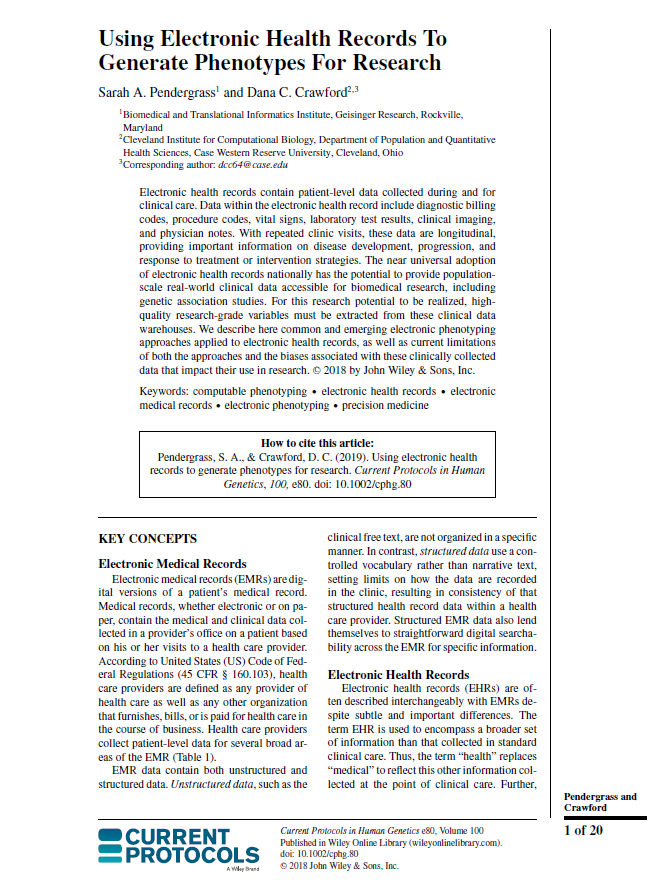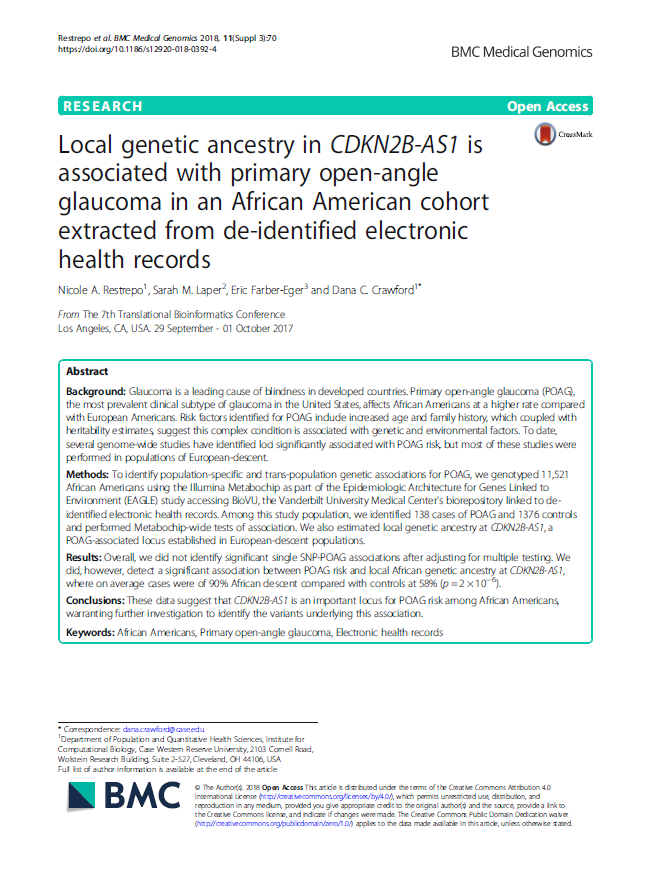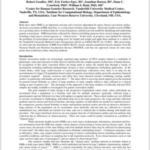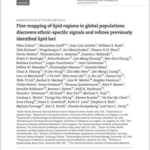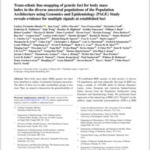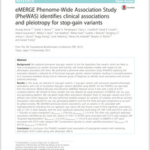Every year, March comes in like a lion. For CLE, that could translate into a spring blizzard or early bulbs. It’s anyone’s guess. One thing’s for sure, though–AMIA’s Informatics Summit has a say before March leaves us like a lamb. Like clockwork, the 2019 AMIA Informatics Summit, formerly the Joints Summits on Translational Science, was […]
Category Archives: Dana Crawford
American Society of Nephrology (ASN) 2018 in San Diego, CA
Moving institutions can be stressful, but it also has its rewards. One real reward is the potential for new and meaningful collaborations. In moving to Case Western Reserve University, I have had the fortune of meeting Drs. John Sedor and John O’Toole. I met the two soon after I joined the faculty of the new […]
Using Electronic Health Records to Generate Phenotypes for Research
Sarah A. Pendergrass and Dana C. Crawford Electronic health records contain patient-level data collected during and for clinical care. Data within the electronic health record include diagnostic billing codes, procedure codes, vital signs, laboratory test results, clinical imaging, and physician notes. With repeated clinic visits, these data are longitudinal, providing important information on disease development, […]
The 2018 Wrap Up
What can I say–this end-of-the-year update is extremely late. I mean, it’s February and 2019 is well underway. I blame it on the polar vortex. Actually, this was supposed to be a 2018 summer update, so it is not fair to blame the CLE winter for my tardiness. Ah, summer (Figure 1). Where did you […]
Local genetic ancestry in CDKN2B-AS1 is associated with primary open-angle glaucoma in an African American cohort extracted from de-identified electronic health records.
Restrepo NA, Laper S, Farber-Eger E, Crawford DC. Glaucoma is a leading cause of blindness in developed countries. Primary open-angle glaucoma (POAG), the most prevalent clinical subtype of glaucoma in the United States, affects African Americans at a higher rate compared with European Americans. Risk factors identified for POAG include increased age and family history, […]
Reducing Clinical Noise for Body Mass Index Measures Due to Unit and Transcription Errors in the Electronic Health Record.
Goodloe R, Farber-Eger E, Boston J, Crawford DC, Bush WS,. Body mass index (BMI) is an important outcome and covariate adjustment for many clinical association studies. Accurate assessment of BMI, therefore, is a critical part of many study designs. Electronic health records (EHRs) are a growing source of clinical data for research purposes, and have […]
Fine-mapping of lipid regions in global populations discovers ethnic-specific signals and refines previously identified lipid loci.
Zubair N, Graff M, Luis Ambite J, Bush WS, Kichaev G, Lu Y, Manichaikul A, Sheu WH, Absher D, Assimes TL, Bielinski SJ, Bottinger EP, Buzkova P, Chuang LM, Chung RH, Cochran B, Dumitrescu L, Gottesman O, Haessler JW, Haiman C, Heiss G, Hsiung CA, Hung YJ, Hwu CM, Juang JJ, Le Marchand L, Lee […]
Trans-ethnic fine-mapping of genetic loci for body mass index in the diverse ancestral populations of the Population Architecture using Genomics and Epidemiology (PAGE) Study reveals evidence for multiple signals at established loci.
Fernández-Rhodes L, Gong J, Haessler J, Franceschini N, Graff M, Nishimura KK, Wang Y, Highland HM, Yoneyama S, Bush WS, Goodloe R, Ritchie MD, Crawford D, Gross M, Fornage M, Buzkova P, Tao R, Isasi C, Avilés-Santa L, Daviglus M, Mackey RH, Houston D, Gu CC, Ehret G, Nguyen KH, Lewis CE, Leppert M, Irvin […]
eMERGE Phenome-Wide Association Study (PheWAS) identifies clinical associations and pleiotropy for stop-gain variants.
Verma A, Verma SS, Pendergrass SA, Crawford DC, Crosslin DR, Kuivaniemi H, Bush WS, Bradford Y, Kullo I, Bielinski SJ, Li R, Denny JC, Peissig P, Hebbring S, De Andrade M, Ritchie MD, Tromp G,. We explored premature stop-gain variants to test the hypothesis that variants, which are likely to have a consequence on protein […]



